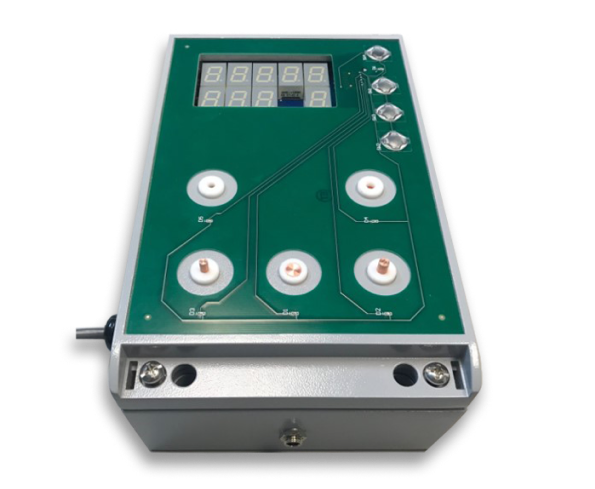Alloy Tester Firmware Implementation
Highlights
In 2019, we were contacted by a producer of temperature sensors for molten metals. To ensure accurate measurements, the sensors must contain pure copper or electricity grade copper alloys, since even 0.1% phosphorus in the alloy leads to reduction of the electrical conductivity of the copper by 55%. This significantly skews sensor readings while measuring parameters of molten metals, which can disrupt the processes in their customers' foundries.
To produce the sensors, our customer orders small copper details, such as plugs, connectors and cable conductors from another supplier, and can’t control their quality at the production stage.
Challenge
Customer Challenge
There is no equipment capable of determining the quality of small copper components of sensors that can guarantee the accuracy of measurements made by the client’s sensors.
Project Objective
To ensure the quality of temperature sensors for molten metals by providing the ability to test their copper components.
Solution
To distinguish high-quality copper components put in the molten metal sensors, PSA together with our partner developed an alloy tester based on EMF (electromotive force) measurements of copper samples. Our partner had developed the hardware part, while our team was responsible for the custom firmware. To eliminate hardware drawbacks, we performed hardware design review and offered our partner optimal improvements.
While designing firmware, we performed the following activities:
-
Architecture Design
-
Development
-
Engineering Testing
-
Functional Testing
Due to the need for the device being developed to be compact and sensitive, it had some restrictions, such as the number of LED-displays connected to one port, or low LED-display working current. Our team managed to bypass these restrictions by improving the firmware. For example, to improve the accuracy of temperature measurement and reduce the influence of heating elements and currents in control circuits, we developed special algorithms for controlling and taking readings from sensors.
Development Included
- Requirements clarification
- Hardware design review
- Firmware design and implementation
- Testing and product verification
- Final delivery
Result

The delivered device can distinguish electrical grade copper from other copper alloys in very fine detail; this ensures accuracy of measurements within molten metal temperature sensors. The client utilizes the device to produce both sensors and other copper products, such as copper wires.
Technology Breakdown
- 1 Technical Coordinator
- 1 Project Manager
- 1 Software Engineer
- 1 QA Engineer
- 1 Technical Assistant
- 1 Business Analyst
- May–September, 2019
To deliver the solution, we also utilized:
-
Microchip MPLAB X IDE v.3.61 with XC8 v.1.42 compiler
-
Microchip MPLAB IPE v.3.61
-
Microchip PICKit 3 programmer/debugger







